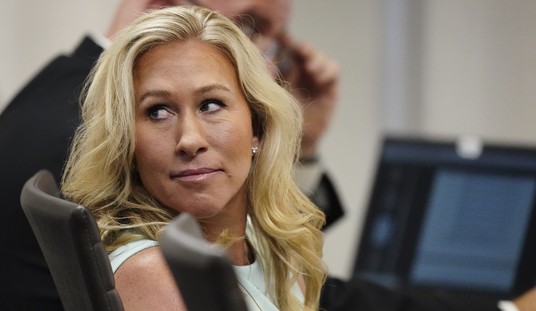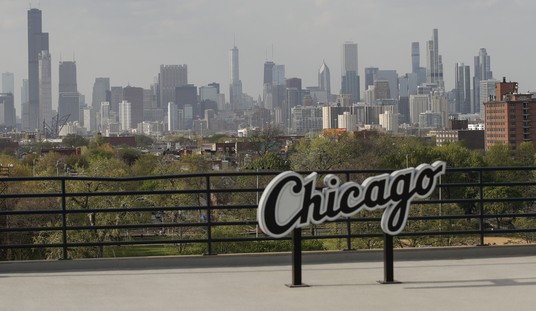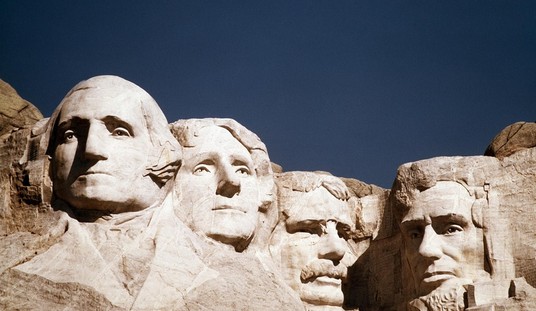Last night, Barack Obama continued to insist that his budget balances spending and outlays. In an interview in Cincinnati with ABC affiliate WCPO, Obama told interviewer Carol Williams that his budget will “solve the short term problem” of deficit spending, emphasis mine:
“The one that we can solve right now if we get together in a sensible kind of way is the amount of debt we’re working with on an annual basis, our annual deficits,” The president said. “My budget freezes spending for five years and what that does is solve the short term problem by saying we’re not going to spend anymore money than we’re taking in. That requires some painful cuts in certain areas, some cuts that I’d prefer not to have to do, but I think it’s important for us to get that right.”
At ABC headquarters, however, Jake Tapper and Sunlen Miller politely call this assertion “factually incorrect“:
That is factually incorrect. Even after the president’s proposed budget – with its optimistic prediction of 3.9% growth – achieves a point, in 2017, when spending is roughly equivalent to taxes coming into the government, the U.S. government will continue to borrow hundreds of billions of dollars a year to pay for interest on the national debt accrued until that point – including debt racked up during the Obama presidency.
Indeed, the U.S., according to Obama’s own budget projections, would borrow $627 billion in 2017 to pay the interest on past debt; $618 billion in 2018; $681 billion in 2019; $735 billion in 2020; and $774 billion in 2021.
Or: $3.435 trillion.
On Monday, the Heritage Foundation looked at the rosy predictions on which Obama based his budget projections, and “factually incorrect” doesn’t begin to cover it:
Having pushed discretionary spending up rapidly in the prior two years, the President proposes to reduce 2012 discretionary spending by 5 percent, though he does so only by virtue of three simple and obvious budget gimmicks:
- Redefining Pell grants as mandatory spending. Stripped of this gimmick, discretionary spending jumps by $14 billion in 2012.
- Reclassifying $54 billion of surface transportation spending from discretionary spending to mandatory spending.
- Spending the peace dividend. The budget proposal includes spending for military operations in Iraq and Afghanistan, referred to as “overseas contingency operations,” as discretionary spending and reduces funding for these operations by $38.2 billion in 2012.
Reversing these budget tricks lifts 2012 discretionary spending by $106.2 billion for an overall $31 billion increase in discretionary spending.
Earmarks. Once again, the President has promised to oppose earmarked spending. He also claimed that the 2009 stimulus bill was free of earmarks. One can only hope he is more vigorous in keeping his promise going forward than he was in the past.
Total Spending. Under the President’s budget, total spending would rise 49 percent over the next 10 years of the budget window. Even after inflation, this represents a 30 percent increase in spending.
Taxes. The President continues to play games with the scoring of tax policy. For example:
- He proposes to raise the top tax rate on capital gains and dividends to 20 percent from 15 percent and lists this as a tax cut that reduces revenues by $124 billion over 10 years.
- He proposes to extend the Bush tax cuts for low- and middle-income families and correctly includes this extension in the revenue baseline. But then, breaking with past practice, he leaves the tax relief for upper-income individuals and small businesses out of the baseline and thus conveniently has no reporting of the resulting tax hike.
- He proposes to prevent the Alternative Minimum Tax from rising in 2013, and then in classic Washington style proposes $321 billion in new tax hikes to offset the cost of not raising taxes.
Debt. Under the President’s budget, despite the proposed tax hikes, publicly held debt (net of financial assets) rises from $9.5 trillion in the current year to $16.7 trillion by 2021.
In other words, Obama’s budgets don’t actually cut overall spending at all. Spending rises by 30% in real terms over the ten-year projections, and publicly-held debt (which excludes that held by the Social Security Administration) rises by 57% in the same period. Instead of limiting mandatory spending, Obama attempts to hide discretionary spending by transferring pet areas of spending into the mandatory category. It’s a three-card Monty attempt to distract from Obama’s agenda of continued federal spending and regulatory adventurism while claiming fiscal responsibility.
How many times does a politician get to repeat an easily disprovable “factually incorrect” statement before it can be called a lie?
Update: Glenn Reynolds talks to Sen. Bob Corker about a spending cap at PJTV.







Join the conversation as a VIP Member